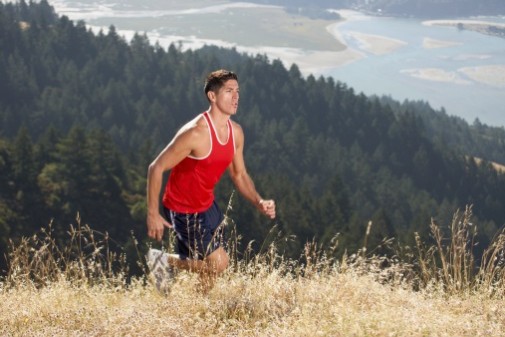What’s the deal with elevation training masks?

Elevation training masks have become increasingly popular among athletes.
Pros like NFL star Marshawn Lynch and NBA great Lebron James are using the masks, as well as amateur runners and cyclists. In addition to looking like Bane from “The Dark Knight Rises,” athletes who use these elevation training masks experience a number of benefits to their overall fitness, but without the proper knowledge and supervision, these masks and other forms of low-oxygen, or hypoxic training can be dangerous, experts say.
This training technique has an irresistible allure for athletes of all sports at all levels who are looking to improve their cardiovascular health, but according to a recent study from Spain, most amateur athletes who undergo hypoxic training are not under the supervision of specialists and do not have a complete understanding of low-oxygen training.
“Medical and scientific monitoring and regulation of the physiological responses to exposure to this type of training is not all that widespread among amateurs,” lead researcher Jesús Álvarez-Herms said in a news release. “Only 25 percent make use of it as opposed to 98 percent of professionals.”
This can be dangerous because amateur athletes tend to overestimate the potential benefits of hypoxic training and do not tailor their diet and exercise to the rigors of the training.
“Hypoxic training should be done under the guidance of a health care professional,” says Dr. Ronak Patel, orthopedic surgeon and sports medicine specialist at Advocate Good Samaritan Hospital in Downers Grove, Ill. “Athletes with cardiac or pulmonary conditions should talk to their primary care doctor first.”
The science behind hypoxic training is simple, an individual training at low oxygen levels conditions their body, over time, to become more efficient at transferring oxygen. This increases the individual’s cardiovascular fitness, which ultimately improves physical performance.
Elevation training masks, which are just one form of hypoxic training, simulate the low levels of oxygen that are found at higher altitudes. This means an individual who is running around a track at sea level can train as if the track were in the mountains at 6,000-feet above sea level.
The main recommendation to sportspeople undergoing altitude training is to evaluate their individual physiological and physical response to altitude, study authors said.
Related Posts
Comments
About the Author
health enews staff is a group of experienced writers from our Advocate Health Care and Aurora Health Care sites, which also includes freelance or intern writers.

















